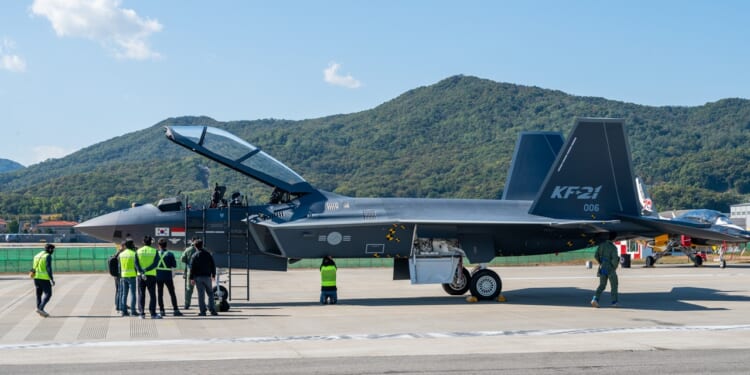China, which has long viewed US and allied defense cooperation with deep suspicion, is likely to react negatively to the prospective Philippine-South Korean arms deal.
With the People’s Republic of China (PRC) consistently breathing down the strategic neck of the Philippine government for control over the South China Sea (SCS), along with Philippine core territorial waters in that region, Manila is desperately seeking to acquire modern military equipment that will assist with the defense of their territorial integrity.
Thus, the Philippine Air Force is looking to upgrade its current fleet of fighter jets as part of its Multi-Role Fighter (MRF) program, which aims to procure more advanced warplanes to better cover its archipelagic geography and contend with maritime and air threats better.
South Korea Throws a Lifeline to the Philippines
Heeding the call of the Philippines, and eager to boost their own high-end defense exports, Korea Aerospace Industries (KAI), a major defense firm in South Korea, has offered to sell the Philippines their KF-21 Boramae fourth-generation-plus warplane to the Philippine Air Force. Specifically, KAI proposed the sale of ten KF-21 Block I fighters to meet the Philippines’ MRF requirement.
The KF-21 is still in its early production phase. But South Korea is moving fast toward mass production, and its own air force is preparing to field these dynamic warplanes. Separately, the Philippines already signed a deal with Seoul in June 2025 for 12 additional KAI FA-50 Block 70 fighter jets, worth around $700 million.
Via the Mutual Defense Treaty, the Philippines has long been a key American security partner in the Indo-Pacific. The country has acquired American-made military gear, such as warplanes and warships from Washington over the years. If the Philippines shifts—or even expands—toward South Korean jets like the KF-21, it may diversify away from a pure US-supplier path. That might be a good thing, however, considering how paralyzed the US defense industrial base has become—and how difficult it has proven to meet its own needs, let alone the needs of its partners.
Could KAI Pose a Threat to US Defense Exports?
Like the Philippines, South Korea is a key US military partner in the region. And the Americans have been quietly encouraging the South Koreans to develop the KF-21, partly because Washington understands (even if they won’t admit it) that the defense industrial base in America needs help picking up the slack. Whether it be shipbuilding or warplanes, South Korea can help.
What’s more, US defense contractors helped the South Koreans in the design of the KF-21. So, on some level, this is not a real threat to America’s arms exports to the Philippines. Especially since the US gains more by keeping the Philippines in fighting form rather than only worrying about whether Manila will buy exclusively from American arms exporters.
The US might offer the Philippines F-16s, allowing for Filipino leaders to compare costs. Yet Manila should be aware that the Americans are already struggling to keep up with the needs of their foreign purchasers. After all, the Americans have fallen behind in supplying the F-16V to Taiwan because of issues with the defense industrial base in the United States. With the Philippines’ geopolitical situation less tense than Taiwan’s, it seems reasonable to assume that Taipei would be prioritized in the event of a crisis.
Of course, the KF-21, unlike the F-16, is an immature system. So, choosing this system involves accepting more risk, which means the Philippines might prefer older, more reliable American systems (if the Americans can actually deliver them reliably).
How Would China React to a South Korea-Philippines Arms Deal?
China has in recent years reacted strongly when the Philippines acquired advanced weaponry or deepened ties with the Americans and their regional allies. For instance, when the Philippines were reportedly acquiring F-16s from the United States, Beijing warned that such moves were viewed as needlessly provocative.
Moreover, China being in a territorial dispute with South Korea over part of the SCS might view the introduction of South Korean warplanes to the Philippines, another country in a regional dispute with Beijing over the SCS, might view this as an escalation by both the Philippines and South Korea.
All in all, the Americans cannot provide for the common defense of all these besieged countries. It must come to rely upon—even welcome—allied nations, like South Korea, enhancing their own defense production and export capabilities so that other US allies, like the Philippines can better resist our common rivals (in this case, China).
About the Author: Brandon J. Weichert
Brandon J. Weichert is a senior national security editor at The National Interest. Recently, Weichert became the host of The National Security Hour on America Outloud News and iHeartRadio, where he discusses national security policy every Wednesday at 8pm Eastern. He is also a contributor at Popular Mechanics and has consulted regularly with various government institutions and private organizations on geopolitical issues. Weichert’s writings have appeared in multiple publications, including The Washington Times, National Review, The American Spectator, MSN, and the Asia Times. His books include Winning Space: How America Remains a Superpower, Biohacked: China’s Race to Control Life, and The Shadow War: Iran’s Quest for Supremacy. His newest book, A Disaster of Our Own Making: How the West Lost Ukraine is available for purchase wherever books are sold. He can be followed via Twitter @WeTheBrandon.
Image: Shutterstock / Ju Jae-young.


















